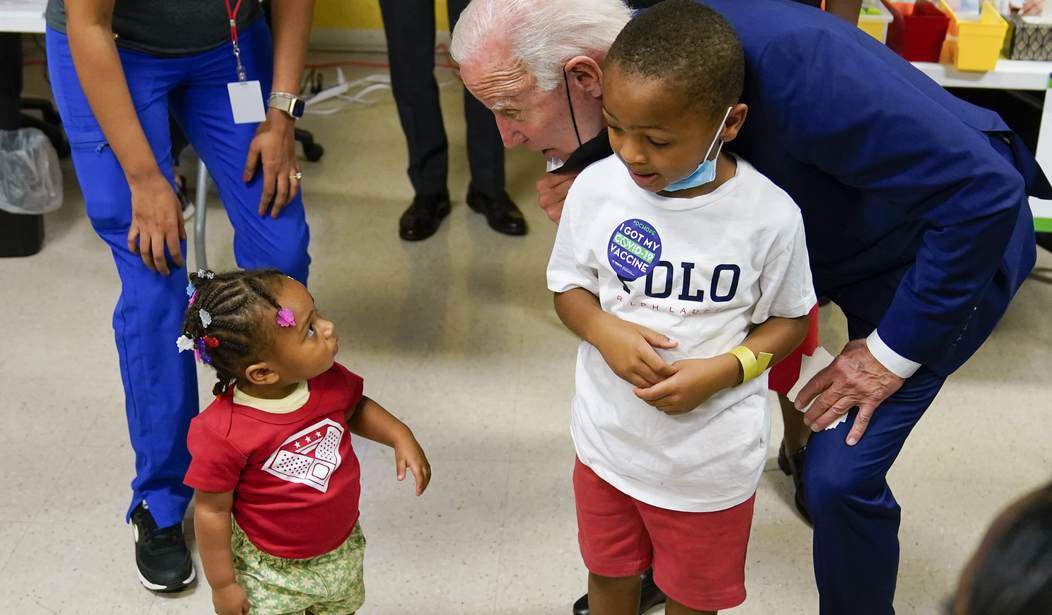Critical questions are often ignored in the well-intentioned rush to support American families by expanding the Child Tax Credit (CTC): Aren't we already doing enough, and is this the best way to help? It's imperative to step back and examine the assumptions at the heart of this ongoing debate.
The child tax credit was first introduced in the 1997 Taxpayer Relief Act as a way to lower the tax burden for working families, with a $500 per child credit. It was increased a few times, including during the Bush years and in 2017 during the latest Republican tax reform. The justification has morphed into whatever its advocates happen to think it should be: It's an anti-poverty program -- hence its refundability. It's a pro-family program -- hence its growing size. It's a fertility booster program -- hence both its size and refundability.
While it's not that great at meeting any of these goals, it is a true budget buster. At current levels, it costs about $1 trillion over ten years, a price tag that will grow if it is expanded.
For the 2024 tax year, the CTC will be worth $2,000 per qualifying child, with $1,700 potentially refundable through the additional child credit. The House of Representatives just passed an expansion that, if passed untouched by the Senate, would extend more benefits to lower-income families. The maximum refundable amount per child would increase from $1,600 to $1,800 for 2023 taxes filed this year. It would also grow depending on inflation. And it would only require work every other year, which is a first step into turning the credit into a universal basic income for families.
Recommended
Ignoring that the CTC sits on top of roughly 80 or so other welfare programs -- many of which are already targeted at families -- advocates of the CTC expansion argue that to make it a better anti-poverty measure, we should eliminate the work requirements. Assuming no behavior changes, the expansion would certainly provide more government cash for eligible families -- but it complicates things further by creating disincentives to work and rise from poverty, especially as it builds on other existing transfers.
Research by Kevin Corinth and Scott Winship at the American Enterprise Institute highlights the fact that after the proposed Wyden-Smith expansion, a single parent with three children earning $15,000 annually would get $11,244 from the Supplemental Nutrition Assistance Program (SNAP), $6,750 from the Earned Income Tax Credit (EITC), and $5,400 in CTC money. That adds up to a little more than $37,000 (ignoring many other benefits). Tragically, because of the way higher earners are phased out and the generosity of the cumulative benefits, if that same single mom's work earnings nearly tripled to $40,000, she'd take home only some $5,000 more. Indeed, making more than $39,000 means losing all of SNAP and some EITC.
It isn't hard to see how this system, despite creating some work incentives at first, discourages people from pursuing better long-term paths for their families. This is a big deal. Increased employment among low-income parents as a result of work requirements has driven much of the long-term decline in child poverty, as we learned during the welfare reform of the 1990s. We need stronger incentives to move up the income ladder rather than incentives that perpetuate systemic poverty. And this expansion of the credit isn't going to cut it.
Unfortunately, many on the right are willing to ignore the disincentive to work because they worry about declining fertility rates. That would be a valid argument if, and only if, we had evidence that more government spending or more tax credits were effective at lifting fertility rates after they drop below replacement rates. And that isn't the case.
As Adam Michel and Vanessa Brown Calder noted, the CTC, other financial transfers, and cash benefits are unlikely to be a cure for what ails us. A review of relevant studies "finds that financial transfers result in a short?term increase in births while leaving the long-term total unaffected."
A better way to go would be to boost economic growth so that families have more income in the first place. One way to do this is to cut and flatten tax rates, which would change incentives to save, invest or be entrepreneurial. Also advisable is doing away with the excessive regulations driving up the cost of things families need, like housing, food, formula and child care.
Veronique de Rugy is the George Gibbs Chair in Political Economy and a senior research fellow at the Mercatus Center at George Mason University. To find out more about Veronique de Rugy and read features by other Creators Syndicate writers and cartoonists, visit the Creators Syndicate Web page at www.creators.com.
























Join the conversation as a VIP Member